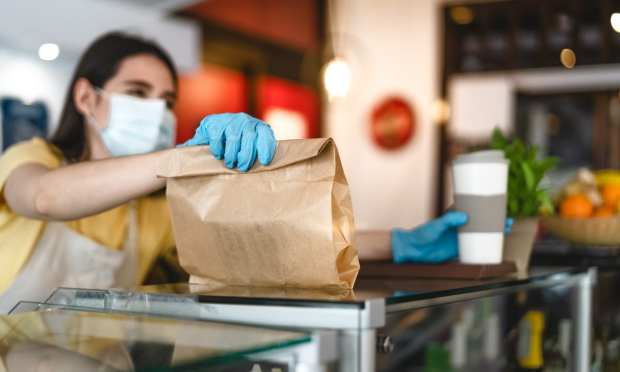Super Bowl Tests Independent Restaurants’ Ability To Adapt

This year, the Super Bowl, typically a big draw for local restaurants and sports bars, was a mixed bag. While large quick-service restaurant (QSR) chains may have performed well over the weekend, consumers’ Super Bowl spending was allocated very differently this year than in pre-pandemic years. Restaurants that focused on promoting their game day takeout options saw increased demand, while establishments that relied on their pre-COVID business model to drive Super Bowl sales struggled.
As many consumers planned game day celebrations with their pandemic pod-mates, grocery store sales surged. Supermarkets saw unprecedented lines all around the country, from Michigan to Mississippi to New York. Meanwhile, bars and restaurants struggled to make up for game day sales — especially those without a takeout-friendly business model.
“Those independent operators, the mom-and-pops, are the ones getting absolutely crushed right now,” David Henkes, senior principal at food service consulting firm Technomic, told WINK. Travis Davidson, a bar owner in Tulsa, Oklahoma, said, “If we could make half of [what we’d make in a typical year], that would be a win.” Jeffrey Jones, a Lansing, Michigan bar owner, was even less optimistic, saying, “Once the utilities and products I bought are paid up, there’s no money in it for me… If I break even, I’m happy.”
Independently owned restaurants’ performance during the game also depended heavily on both local COVID restrictions and neighborhood residents’ levels of COVID consciousness. In New York, bars that were banking on their heated outdoor dining offerings were thwarted by snow storms, according to NY1, and in other parts of the state, 10 p.m. curfews made it impossible to draw in Super Bowl-watching customers, according to WKBW. In Los Angeles, the department of health banned TV screens to prevent mass gatherings, ABC7 reported, while in Northern California, health inspectors made surprise visits to enforce restrictions, reports CBS SF.
“Today is really not a money-making type of day,” San Jose restaurant owner Randy Musterer told the news outlet. “We can’t pack the patio like we normally would. We’re just giving our customers a chance to come out and enjoy some football, keep people out of inside homes, out of those house parties, and give them a safe place to watch the game.”
Demand Surges For Game Day Takeout And Delivery
Small restaurants that offered game-day-friendly takeout offerings fared better than their on-premises-centric counterparts. Tony Chaleunphonh, the owner of a fried chicken restaurant in New Mexico, told KRQE that the restaurant sold about 4,000 chicken wings on Sunday, explaining that the staff was “looking at five times more than what we normally do on an average day, on an average weekend.” Other restaurants known for their fried chicken saw a similar sales spike. This makes sense, given that, as KRQE notes, Americans broke records by consuming 1.4 billion chicken wings throughout Sunday, per National Chicken Council estimates.
“We’re doing a ton of take out,” West Virginia sports bar owner Joe Guilfoile told WCHS. “We bought a ton [of chicken wings] for this week. It seemed like it was a good idea to do so because people are still eating.” Chicago restaurant owner Rick Douglas, speaking to ABC7, agreed, saying, “The takeout orders have been nuts today. Off the charts.”
Michigan bar owner Melissa Krause told 9 & 10 News that takeout orders were especially high for viewing party-friendly food menu items: “Lots and lots of wings lots of appetizers, lots of French fries.” In fact, in some parts of the country, delivery demand was so high that delivery drivers were overloaded with orders. In Champaign, Illinois, drivers were running behind all day on “arguably the busiest day of the year,” reports WCIA.
With the approach of Valentine’s Day, another event that has typically provided a much-needed boost to small restaurants in the difficult winter months, owners would be well-advised to heed the lessons of the Super Bowl, offering takeout-friendly meals and holiday-centric menu items.
To learn more about the latest order to eat developments, including how 68 percent of restaurateurs plan to boost technology spending by 2025, and how QSRs experienced more robust holiday gift card sales than fine dining restaurants, check out the most recent PYMNTS Paytronix Order to Eat Tracker.
